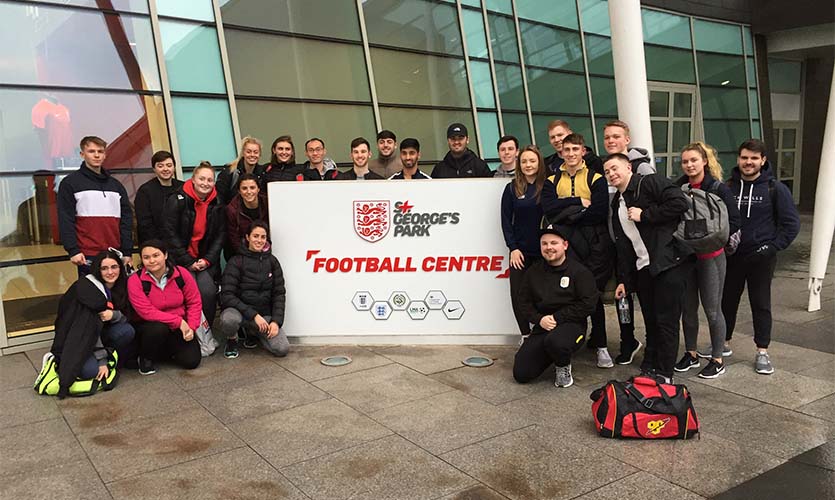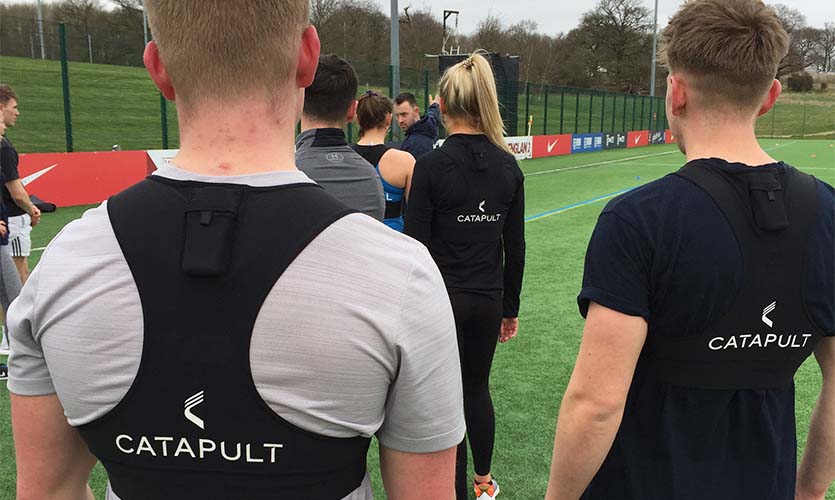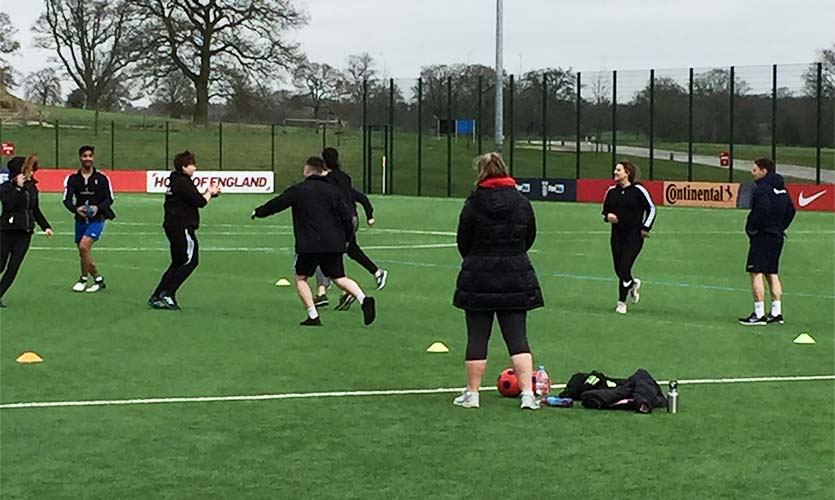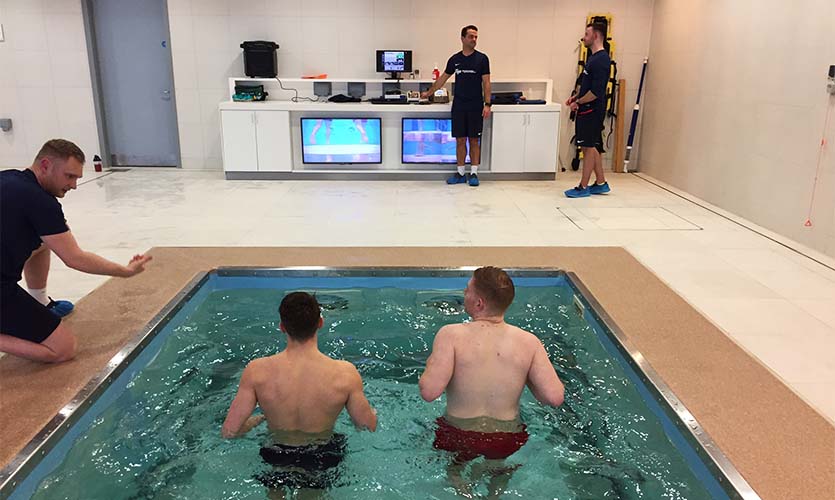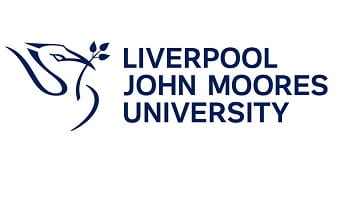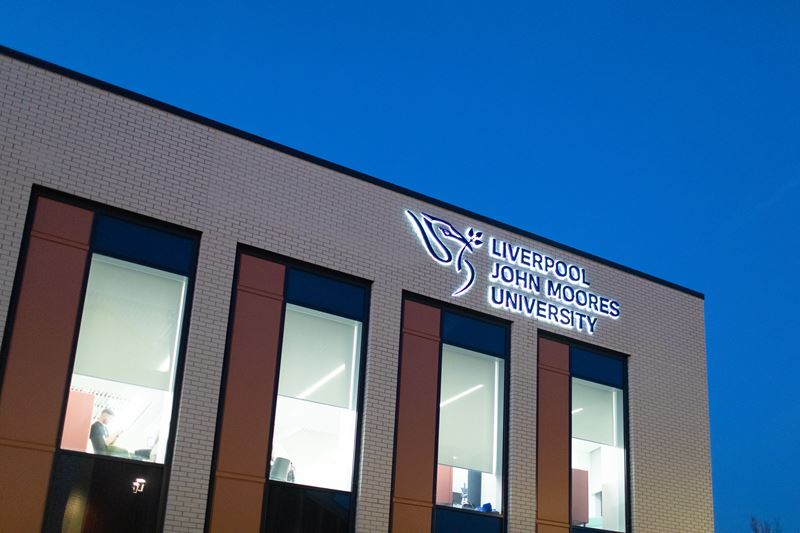St. George's Park visit
On Friday 8 March, over 20 students studying BSc and MSc programmes in LJMU's School of Sport and Exercise Sciences visited St. George's Park, the home of the Football Association. This facility is the base for Gamechanger Performance – expert practitioners who specialise in sports performance and rehabilitation including the PFA. Throughout the day, we were introduced to different techniques and philosophies used by the Gamechanger Performance team.
Data recording and analysis
Our morning started in the gym with some interactive learning. First up, was a warm-up and screening. Partners observed each other’s overhead squat techniques, identifying any potential weaknesses, and discussing potential reasons and solutions for these. Then, we used the Nordbord, which is specialist equipment used to look at hamstring strength and imbalances. In addition, students performed countermovement jumps on force plates with particular interest at using the data to identify any potential asymmetry and the effect that this could have on athletic performance. The Gamechanger practitioners also explained how these were used in the applied world throughout and discussed more financially-friendly alternatives that could be used, however these techniques would obviously sacrifice validity. This was a great opportunity to use the top-level equipment.
Profiling and programming
Next up was athletic profiling where we had to create an appropriate programme to deal with the individuals’ particular weaknesses, such as eccentric strength, concentric strength and muscular asymmetry. This was a great opportunity to freely explore the gym equipment to construct the most effective programmes. It was also an opportunity for students to discuss their ideas and learn from each other’s different strategies. After the 10 minutes of planning, each group then presented their programmes with some physical demonstrations. Through reflection on the task, discussion evoked how manipulating compound exercises to target specific muscles and ranges of motion maximises efficiency, which is massively important in rehab and the applied world.
Field activities and GPS data collection
Following lunch, we headed to one of the (many) astroturf pitches. GPS trackers were used to analyse the total distance and high intensity bouts of exercise which included straight line repeated sprints and agility and change of direction tasks.
The sprinting was quite competitive as partners raced each other, which prompted a few individuals to regret eating quite so much at lunch!
The agility and changing direction station consisted of more game type activities, which included ball games and some more psychological/decision-making tasks. The Gamechanger performance coaches expressed how important it is for athletes to enjoy what they are doing and this is often achieved through drills that are more creative.
GPS analysis
We then went inside to download and interpret the GPS results from the field. The GPS data provided many different results. Such as, distance covered, max speed, different speed zones, changes of direction and many more. This is used at Gamechanger performance and in the applied world to understand where an athlete is at in their recovery. By comparing an individual to their match fit state and therefore being able to make informed decisions to whether or not athletes are ready to compete.
Hydrotherapy
Following this, the last activities of the day and probably the most anticipated - hydrotherapy. One of the stations was based in a variable depth swimming pool and this involved a traditional warm up (but, in a pool!) with focus on activating the muscles, stabilising and mobilising the appropriate joints. This then developed into a game of water polo, which again bought out the competitive streak in everyone!
Another station was hot and cold treatment. Students spent 10 minutes in a cold pool, followed by 10 minutes in a hot jacuzzi and without doubt the guys made more of a fuss about the cold compared to the girls!
The final station was the underwater running machine. Which was a particular highlight for many. Getting to use this world-class equipment was an amazing experience, which I am thankful to have had!
Lastly, the group was debriefed and reflected on the day. The coaches who led the day opened up a Q&A; students asked them about their journeys and experiences, as well as any advice they could give. In conclusion, it was a fantastic day down at St. George’s Park which I was very fortunate and thankful for – it was a great experience for us all and gave a real insight into the applied world.

